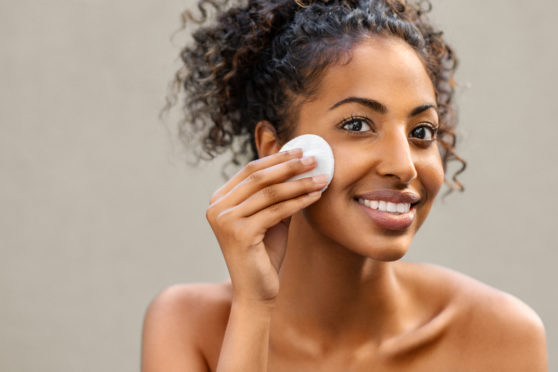
Keeping our skin healthy was once as straightforward as “cleanse, tone, moisturise”…and repeat.
But the growing influence of multi-step Korean skincare, which includes the use of serums, oils, balms and acids, means it can be difficult to know what to use and when.
Here, Julia Marinkovich, from K-beauty brand COSRX, shares her expert guide to layering.
Fresh start
Before applying targeted skincare products, it’s important to cleanse away any make-up, dirt and oil.
Julia explained: “Applying skincare on to a slightly damp face means your pores will be more receptive to absorption. This ensures active ingredients will penetrate deeper within the skin, enhancing the effectiveness of your products. So, a thorough cleanse (using a product like COSRX Low-PH Good Morning Cleanser, £13.99) and tone is perfect.”
Building blocks
Once your skin is clean, begin to apply lighter products.
“Start light with your products and build up in order of their density,” said Julia.
“Apply serum and ampoules to freshly cleansed skin – if applied after heavier creams, the active ingredients become less effective, as they can struggle to get through the thicker barrier.”
Pause and prepare
At the end of a long day, it’s tempting to rush through your skincare routine.
But Julia advised setting aside the time, as quickly adding products one after the other can cause pilling, where skincare flakes or builds up in patches on the face.
She said: “To avoid pilling, give each step time to settle and absorb before applying the next. Incorporate your skincare into your morning and evening routine, leaving enough time to allow the products to work without hastily going through the motions.”
Limit active acids
Next, acids are a great way to target specific skin concerns. However, using too many active products can cause irritation. Julia advises picking the right acid for your skin type. She said: “AHAs (glycolic or lactic acids) and BHAs (commonly salicylic acids) are safe to use together. An AHA will remove dead skin cells or flakiness, providing a clean base for building your skincare, whereas BHAs work to break down debris within the pores, preventing pimples.”
Lock in goodness
Finish with a rich moisturiser, such as Embryolisse Lait Crème Concentre, £20. Julie said: “A thick moisturiser is key, as it will seal in active ingredients from previous products, allowing your skin to reap the rewards.”

Enjoy the convenience of having The Sunday Post delivered as a digital ePaper straight to your smartphone, tablet or computer.
Subscribe for only £5.49 a month and enjoy all the benefits of the printed paper as a digital replica.
Subscribe